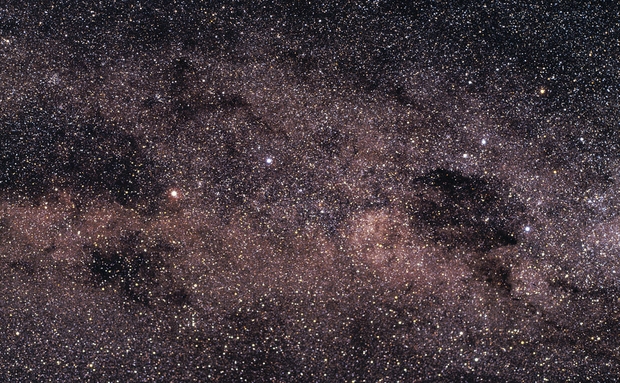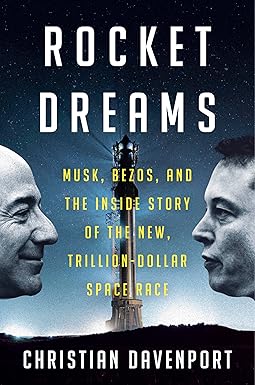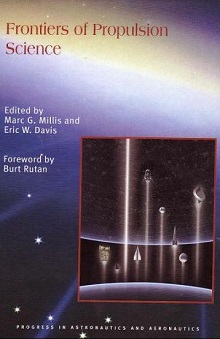The timescales we talk about on Centauri Dreams always catch up with me in amusing ways. As in a new paper out of Western University (London, Ontario), in which astrophysicists Cole Gregg and Paul Wiegert discuss the movement of materials from Alpha Centauri into interstellar space (and thence to our system) in ‘the near term,’ by which they mean the last 100 million years. Well, it helps to keep our perspective, and astronomy certainly demands that. Time is deep indeed (geologists, of course, know this too).

I always note Paul Wiegert’s work because he and Matt Holman (now at the Harvard-Smithsonian Center for Astrophysics) caught my eye back in the 1990s with seminal studies of Alpha Centauri and the stable orbits that could occur there around Centauri A and B (citation below). That, in fact, was the first time that I realized that a rocky planet could actually be in the habitable zone around each of those stars, something I had previously thought impossible. And in turn, that triggered deeper research, and also led ultimately to the Centauri Dreams book and this site.
Image: (L to R) Physics and astronomy professor Paul Wiegert and PhD candidate Cole Gregg developed a computer model to study the possibility that interstellar material discovered in our solar system originates from the stellar system next door, Alpha Centauri. Credit: Jeff Renaud/Western Communications.
Let’s reflect a moment on the significance of that finding when their paper ran in 1997. Wiegert and Holman showed that stable orbits can exist within 3 AU of both Alpha Centauri A and B, and they calculated a habitable zone around Centauri A of 1.2 to 1.3 AU, with a zone around Centauri B of 0.73 to 0.74 AU. Planets at Jupiter-like distances seemed to be ruled out around Centauri because of the disruptive effects of the two primary stars; after all, Centauri A and B sometimes close to within 10 AU, roughly the distance of Saturn from the Sun. The red dwarf Proxima Centauri, meanwhile, is far enough away from both (13,000 AU) so as not to affect these calculations significantly.
But while that and subsequent work homed in on orbits in the habitable zone, the Wiegert and Gregg paper examines the gravitational effects of all three stars on possible comets and meteors in the system. The scientists ask whether the Alpha Centauri system could be ejecting material, analyze the mechanisms for its ejection, and ponder how much of it might be expected to enter our own system. I first discussed their earlier work on this concept in 2024 in An Incoming Stream from Alpha Centauri. A key factor is that this triple system is in motion towards us (it’s easy to forget this). Indeed, the system approaches Sol at 22 kilometers per second, and in about 28,000 years will be within 200,000 AU, moving in from its current 268,000 AU position.
This motion means the amount of material delivered into our system should be increasing over time. As the paper notes:
…any material currently leaving that system at a low speed would be heading more-or-less toward the solar system. Broadly speaking, if material is ejected at speeds relative to its source that are much lower than its source system’s galactic orbital speed, the material follows a galactic orbit much like that of its parent, but disperses along that path due to the effects of orbital shear (W. Dehnen & Hasanuddin 2018; S. Torres et al. 2019; S. Portegies Zwart 2021). This behavior is analogous to the formation of cometary meteoroid streams within our solar system, and which can produce meteor showers at the Earth.
The effect would surely be heightened by the fact that we’re dealing not with a single star but with a system consisting of multiple stars and planets (most of the latter doubtless waiting to be discovered). Thus the gravitational scattering we can expect increases, pumping a number of asteroids and comets into the interstellar badlands. The connectivity between nearby stars is something Gregg highlights:
“We know from our own solar system that giant planets bring a little bit of chaos to space. They can perturb orbits and give a little bit of extra boost to the velocities of objects, which is all they need to leave the gravitational pull of the sun. For this model, we assumed Alpha Centauri acts similarly to our solar system. We simulated various ejection velocity scenarios to estimate how many comets and asteroids might be leaving the Alpha Centauri system.”

Image: In a wide-field image obtained with an Hasselblad 2000 FC camera by Claus Madsen (ESO), Alpha Centauri appears as a single bright yellowish star at the middle left, one of the “pointers” to the star at the top of the Southern Cross. Credit: ESO, Claus Madsen.
This material is going to be difficult to detect, to be sure. But the simulations the authors used, developed by Gregg and exhaustively presented in the paper, produce interesting results. Material from Alpha Centauri should be found inside our system, with the peak intensity of arrival showing up after Alpha Centauri’s closest approach in 28,000 years. Assuming that the system ejects comets at a rate like our own system’s, something on the order of 106 macroscopic Alpha Centauri particles should be currently within the Oort Cloud. But the chance of one of these being detectable within 10 AU of the Sun is, the authors calculate, no more than one in a million.
There should, however, be a meteor flux at Earth, with perhaps (at first approximation) 10 detectable meteors per year entering our atmosphere, most no more than 100 micrometers in size. That rate should increase by a factor of 10 in the next 28,000 years.
Thus far we have just two interstellar objects known to be from sources outside our own system, the odd 1I/’Oumuamua and the comet 2I/Borisov. But bear in mind that dust detectors on spacecraft (Cassini, Ulysses, and Galileo) have detected interstellar particles, even if detections of interstellar meteors are controversial. The authors note that this is because the only indicator of the interstellar nature of a particle is its hyperbolic excess velocity, which turns out to be very sensitive to measurement error.
We always think of the vast distances between stellar systems, but this work reminds us that there is a connectedness that we have only begun to investigate, an exchange of materials that should be common across the galaxy, and of course much more common in the galaxy’s inner regions. All this has implications, as the authors note:
…the details of the travel of interstellar material as well as its original sources remain unknown. Understanding the transfer of interstellar material carries significant implications as such material could seed the formation of planets in newly forming planetary systems (E. Grishin et al. 2019; A. Moro-Martín & C. Norman 2022), while serving as a medium for the exchange of chemical elements, organic molecules, and potentially life’s precursors between star systems—panspermia (E. Grishin et al. 2019; F. C. Adams & K. J. Napier 2022; Z. N. Osmanov 2024; H. B. Smith & L. Sinapayen 2024).
The paper is Gregg & Wiegert, “A Case Study of Interstellar Material Delivery: α Centauri,” Planetary Science Journal Vol. 6, No. 3 (6 March 2025), 56 (full text). The Wiegert and Holman paper, a key reference in Alpha Centauri studies, is “The Stability of Planets in the Alpha Centauri System,” Astronomical Journal 113 (1997), 1445–1450 (abstract).



Is this really surprising? I would have been astonished were we not exchanging material with other stellar systems over the past billions of years. Quantifying the possible or probably exchange rate and volume is interesting but I am not certain that it accomplishes much more than satisfying our curiosity.
Imagine that by some arcane means we determine that several small bodies far from the Sun are definitely from another stellar system, Alphas Centauri or elsewhere. Should be launch a space mission to examine it? If we do we will discover that composition will be somewhat different to objects native to the solar system. But I doubt that the science value is worth the trip.
Interesting nevertheless.
As the journey time for a particle to transfer between our 2 systems is well within the known dormancy and revival of terrestrial bacteria (100 my), this suggests that panspermia between star systems is possible, even if of low probability for a particular star system. But multiply the calculated number of Centauri particles “nearby” by the number of other stars that could have ejected particles towards our system over the past 4.5 by and the probability of an organism reaching us increases.
Some BOE calculations:
Assume particles travel at 30 km/s between stars = 1E-4 c
Assume 1E8 years max survival of a simple unicellular organism
This means a volume with a radius of 1E4 ly that a system could receive a particle within an organism’s survival time to become active again if the environment is favorable.
Assume 1E11 stars’ habitable stars in the galaxy.
Assume that the galactic disc radius is 60,000 ly. If the disc depth is about 10,000 ly,
then the stars within reach of a system is about 1E-2 of the total habitable stars in the disc, or about 1E9.
So at any moment, there are one billion stars that might be sending particles, any one of which might possibly have dormant life hitched aboard.
Because that is a flux that is being added to, this represents a one billion-fold flux of interstellar particles.
More importantly, every star system is receiving this flux from the stars in its range. If any of those stars gets a lucky injection of life, which subsequently sheds particles some of which also bear life, there will be an exponential explosion of particles bearing life that seeds other worlds.
This suggests to me that it just might be worth trying to capture interstellar particles and try to determine if any have life.
Success is a long shot to be sure, but perhaps not as long odds as detecting signals from intelligent life. The detectors could be placed at gravity focal points to increase the effective collection area, perhaps with the proposed SGL telescopes.
Back about 2019, there was an article on this subject here on Centauri Dreams, which was titled “In the Days before Centauri Dreams” based on Alpha Centauri exoplanet stability. This was largely based on my recounting of similar contemporary studies to those of Wiegart and Holman’s, but on a smaller scale. The results were published in the Proceedings of the American Astronautical Society Astrodynamics Conference for August of 1997, held in Sun Valley, Idaho.
This was about a dozen year investigation by that time and had some previous publications, but in the 1980s, determining whether Alpha Centauri planets were stable was a matter of integrating their behavior through their equivalents of Milankovitch cycles of eccentricity variation and periastron position shift in inertial space. Computers were slower in those days. Farther extrapolations came with faster processors.
In addition, there were comparisons with other nearby close binaries studying the habitable (HZ) zones. Alpha Centauri showed a lot of promise as far as I got ( about`100,000 years) for both stars, but B was the more stable environment.
Other star systems, such as Procyon and Sirius? Not very stable and worse.
But with exoplanet data now coming in from thousands of stars, it is still an unclear whether binaries with such separations make formation of exoplanets in such a habitable zone a difficult process or not. It’s a problem distinct from planet
orbital behavior.
While I was doing my own simulations of exoplanets in binary systems, I did find some earlier papers with stable results. David Black the former director of the Lunar and Planetary Science Institute adjacent to the Johnson Space Center had done some work on this as well at the NASA facility at Moffett Field circa 1980, for example.
A year before the Sun Valley AIAA conference, there was another conference at the SUNY campus on Long Island (1996), devoted to planets in binary star systems. Holman and Wiegart were invited speakers. I brought my results for binary stars as a poster presentation. Holman and Wiegert had investigated their target’s properties out to about a million years for cases in and out of the stellar orbital plane in the habitable zone. We were much in agreement on where the HZs were for both stars and B was more stable than A.
At the time most in attendance were in a state like “Are we dreaming?” For it was only a couple of years before then that doppler detections of exoplanets had been going on; there were no transit cases that I can recall. Most of the RV cases would not be invited to our solar system because of their crazy but detectable orbits.
A take-away from listening to those 1996 presentations was that space telescopes sensitive to IR and UV were now starting to pay off. They indicated that clouds of gas and dust around infant stars were much more likely to coalesce into planets than stellar astronomers had previously surmised. At least in isolated star systems. The astronomer who called the gathering together, an IR astronomer herself from UCLA had given the conference the title “Planets in Binary Star Systems”. Though only recently I found a short notice about the planned conference in 1995. That despite the conference title, UCLA astronomy professor Andrea Ghez was not very optimistic about the fate of planets in such systems. Years passed before I got an update on her work in the form of her announced shared Nobel Prize in Physics for subsequent research on the Milky Way’s central black hole Sagittarius A*.
Though shifting ahead to 30 years from those simulations of exoplanets in the Alpha Centauri vicinity, we still do not have any exoplanet “idents”; even though they would seem to hang on fairly well where we would like to see them. And on the outer bounds of the HZ of both stars, that’s about where instability sets in and things would be thrown off into space in all directions. This suggests that exoplanets would be OK – IF they had the opportunity to form…
Looking at material coming from Alpha Centauri, if it is a source, our relative motion is such that tens of thousands of years ago Alpha became our closest neighbor – and on the same scale of time will lose that title. Charts of stellar motion indicate that Alpha should start receding after a while too. It’s not on a collision course. So we have both the time of flight to consider which would be many millennia – and also Centauri’s position millennia more ago when the material was launched. If its exoplanetary system(s) are aligned with the binary’s plane of motion, then material ejected from the system is not necessarily aimed directly at us. And if the exoplanets did not form, then perhaps the era of
debris dispersal into space was billions of years earlier, tossed toward a populace of stars in a different neighborhood, assuming that building a stellar system was unsuccessful.
On the other hand, what about individual Oort clouds interacting or colliding with each other? Could Alpha’s and Sol’s Oort clouds allow humans to hop from system to system like frogs to a succession of small objects composed largely of frozen gases? Freeman Dyson once suggested something like that in the 70s. But while a recent report imaged about 72 densely populated regions termed in the news report as stellar Kuiper Belts extending tens of thousands of AUs, have dense Oort clouds been detected around our near neighbors? Or what would it take to detect them?
At risk of abusing my comment privilege I wonder if you’d look again at this flight of imagination?
A Home World Found
They arrived at Proxima Centauri,
a bubble emerging from the hot bath
of space/time, stirring, swelling, Pop!
Quantum Entanglement had set free
the perpetual wanderlust of humanity.
A first dangerous experiment in FTL
sent 8 brave souls to Proxima Centauri b
to test the systems: would it all work well?
Navigation, communication, crew rotation
were checked to verify critical operations.
It took them 8 days to get past the moon,
then to arrive at the far destination, only
14 hours. Arriving soon but not too soon, relieved they didn’t arrive before they left, which had been a theoretical concern.
Planet b in the best orbit of that star
was still uninhabitable, the other too.
All the moons were cold, too cold by far.
Nonetheless the mission: ground stations, orbital beacons, science labs deployed.
Everything confirmed working so they headed back, briefly stopped at Mars
to drop the same assets set out afar,
this to provide baseline and control
even though they knew it all worked.
Mars to our moon 2 minutes, it was grand.
Then 8 more days to reach home. News
went out, every channel, in every tongue. We all soon knew, in every sovereign land
the age of interstellar travel had come.
Soon an initial 5,862 ships were launched,
one to every known exoplanet in NASA’s
Database. They visited each site, happy
to find most were habitable by something,
the whole universe was teaming with life.
Alien creatures could sing, as a whale
can sing, dance as well as a muskrat
dances on his burrow, or flaunt its crest
like a parrot seeking a mate. Some could build too, as a small bird makes a nest.
On some worlds the inhabitants were found more industrious and organized, seemingly. Though looking very different from honey bees, fire ants or wasps, they
work as hard at constructing their hives.
An LLM of life forms was set up to learn
about a cosmos of creatures living lives
different in detail but not different in kind
to those we see on our own planet, the amazing diversity, amazing life on Earth.
Whales sing, but not one sang an opera.
A monkey with a typewriter never wrote
a sonnet. What do elephants remember?
Not one songbird could ever sing a note
that her mother hadn’t sung before her.
All this was trained into the LLM,
thousands of ships went to the stars
collecting data on everything alive,
observing and testing every nest and hive
for behaviors and capacities like ours.
Many tool makers indeed were found,
using tools picked up from the ground,
all still subject to their environment.
Nowhere among the stars did anyone find
a creature with the abilities of humankind.
A ship’s captain wrote home to her lover:
“I’ve traveled the universe,
and searched the skies
but never found a match
for the beauty of your eyes.”
In a surprisingly small amount of time
the LLM came up with an answer
couched in the form of a rhyme:
My serious conclusion is that you lot
had best learn to keep and protect
what you have already got…
And of course this could be the outcome of future interstellar journeys. My own view is that intelligence is vanishingly rare in the galaxy, while life is all but ubiquitous. But of course we can’t know, and so we keep searching.